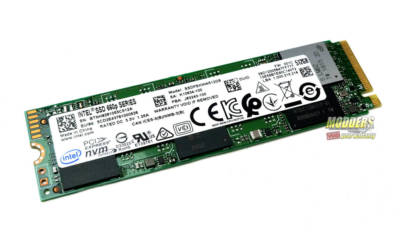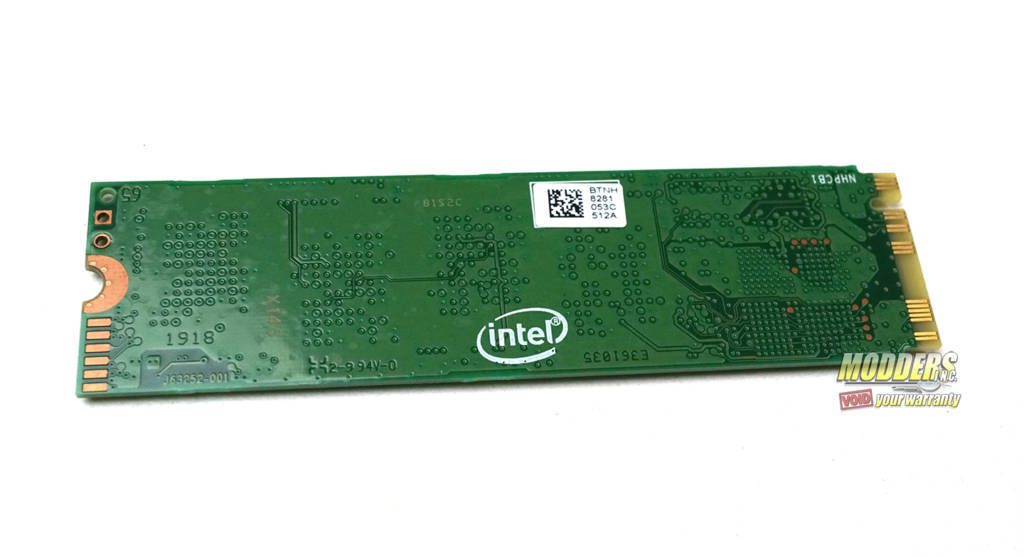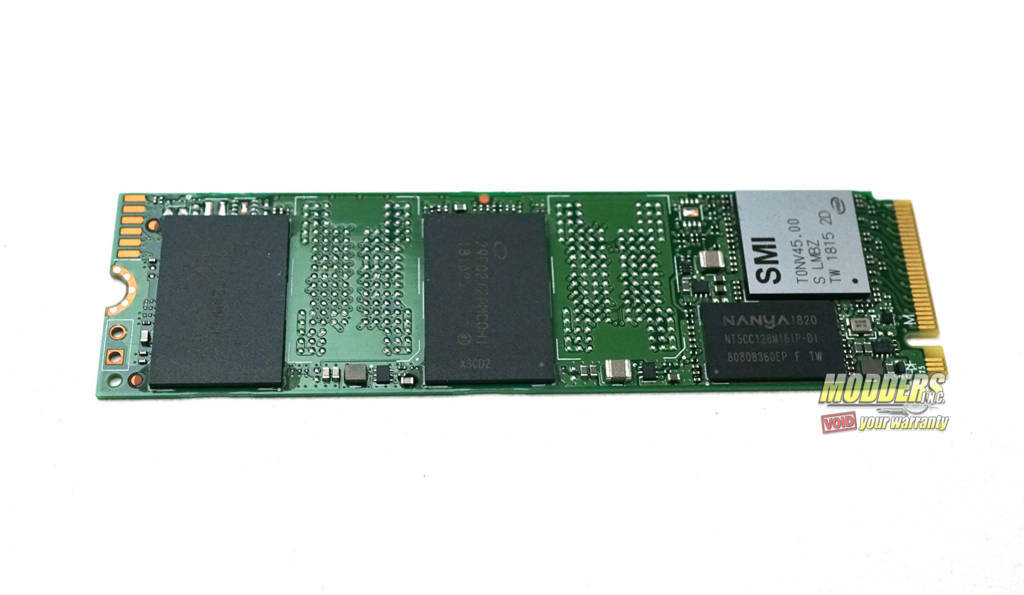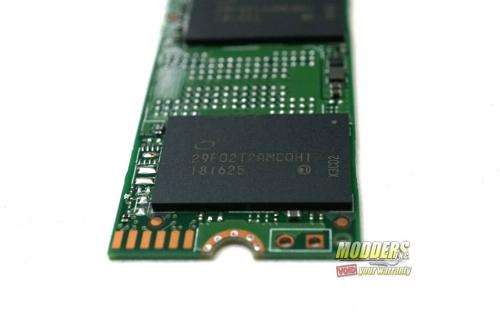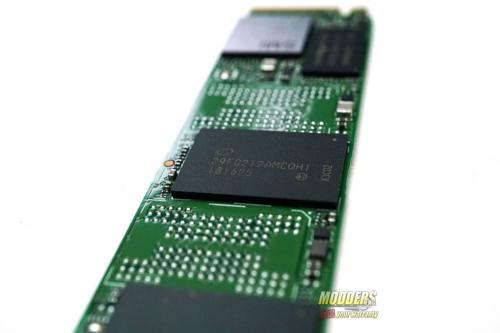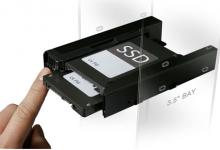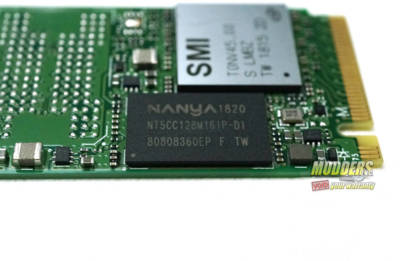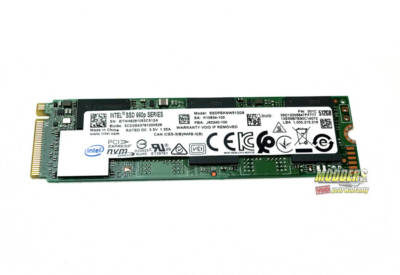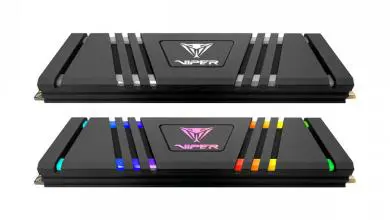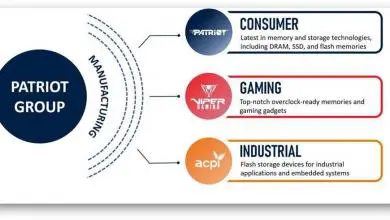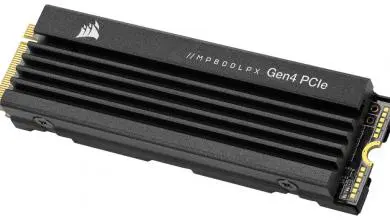A Closer Look at the 660p
This being not only an SSD review but an M.2 SSD review, there isn’t much to be said about the aesthetics of the 660p. It looks much like the average 80mm PCIe gen 3 x4 M.2. The 660p has a green PCB, with a white sticker on it, much like Samsung’s enterprise-grade SSDs do. The sticker has all the information you’d need printed on it. This includes the model number, serial number, voltage and amp ratings, etc. We also removed the sticker, to get a better look at the chips used on the 660p.
Intels all new 660p NVMe SSD comes in capacities from 512 GB, up to 2 TB of PCIe Gen 3 X4 NVMe storage. The 660p is part of the SSD 6 family that also includes the 600p. The 600p was also advertised as a budget friendly PCIe M.2. However, it wasn’t the fastest when compared to its closest competition. This is one of the improvements the 660p made over its predecessor. The 600p achieved speeds of about 1800 on the read and 600 MB/s on the write. The 660p can achieve speeds of up to 1800 on the read and 1800 on the write on both the 1TB and 2TB models. However, the model we reviewed, the 512 GB variant, hits speeds of up to 1500 MB/s on the read and 1000 MB/s on the write.
Intels 660p M.2 SSD uses 3D QLC Nand which is made in house, by Intel. In fact, the 660p is the worlds first PCIe, QLC SSD on the consumer market. QLC stands for Quad-Level Cell. This allows for 4 bits per cell. Essentially, an SSD with QLC nand allows for more density per cell. QLC Nand cells have about 33% more capacity per cell compared to TCL, or Triple-Level Cell Nand. All this combined helps to lower the cost per GB. By using QLC Nand on the 660p, Intel can offer the consumer the best value for NVMe storage.
The 660p uses Intel’s 64-layer 3D NAND. This is the industry’s highest density NAND of this type that is mass produced. The previous generation, the 600p used 32-layer 3D Nand. With the 64-layer 3D Nand, Intel can produce single sided M.2 SSDs, up to 2 tb in capacity. At the time of this review, only the 512 GB and 1024 GB variants are available. However, there is a 2048 GB version set to release sometime in 2018.
The 660p features dynamic SLC-Cache. This will help to improve performance, under the right conditions. Dynamic SLC Cache allows the 660p to cache at single level cell speeds, on a quad-level cell drive. On the 512 GB model, the one we tested, the 660p will utilize 55 gb of SLC Cache. When the drive is at a lower capacity, workloads will stay within the SLC cache. These workloads will see synthetic and random read and write speeds far higher than SATA Drives. However, when the drive is over 75% capacity, the drive could result in lower write speeds. This was not really shown in our results though. Basically, with lower a capacity, the SLC spans increase along with performance. With higher capacity, the SLC spans decrease, along with performance.
Where the drive we used was a cloned OS drive from the test bench we used, the drive was already over 75% capacity. This resulted in write speeds between 900-1000 MB/s, which is right around the 1000 MB/s the 512 GB model is advertised to get on the write speeds. I really wouldn’t attribute the slightly lower than advertised write speeds to the capacity of the drive. If we had been seeing write speeds of 600 MB/s, then maybe. You’ll see in our testing that the 660p we tested hit well above the advertised speed of 1500 MB/s on the read speeds.
